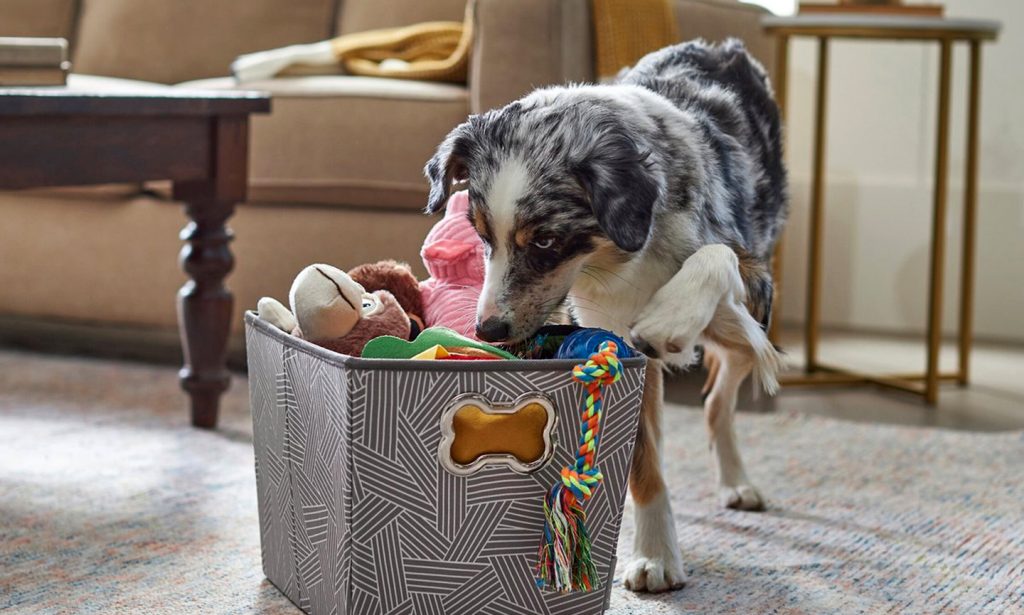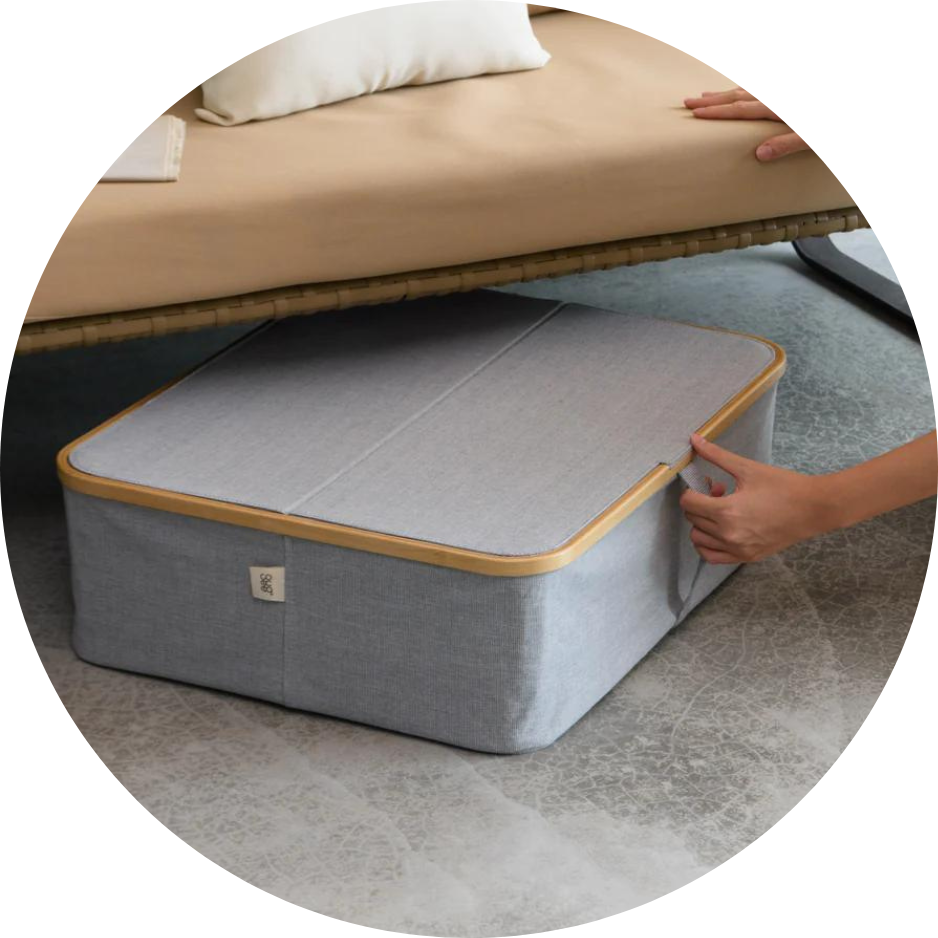If you’re anything like us, treating your pet to a new leash, fun bandana, a chew toy that screams [enter your dog’s name], or a restock of their absolute favorite snacks is just another typical Tuesday occurrence. As much as you may love to spoil your pet, all these items can quickly pile up—especially if you live in a small space.
Before you panic-toss everything in a closet or ditch things on a whim, there are simple ways—aka no Martha Stewart-level skills required—to organize your pet’s belongings. We spoke with Marie Kondo, tidying expert and founder of KonMari by Marie Kondo, and other organizational experts to find out their top pet organizing tips.
1Sort Supplies By Type
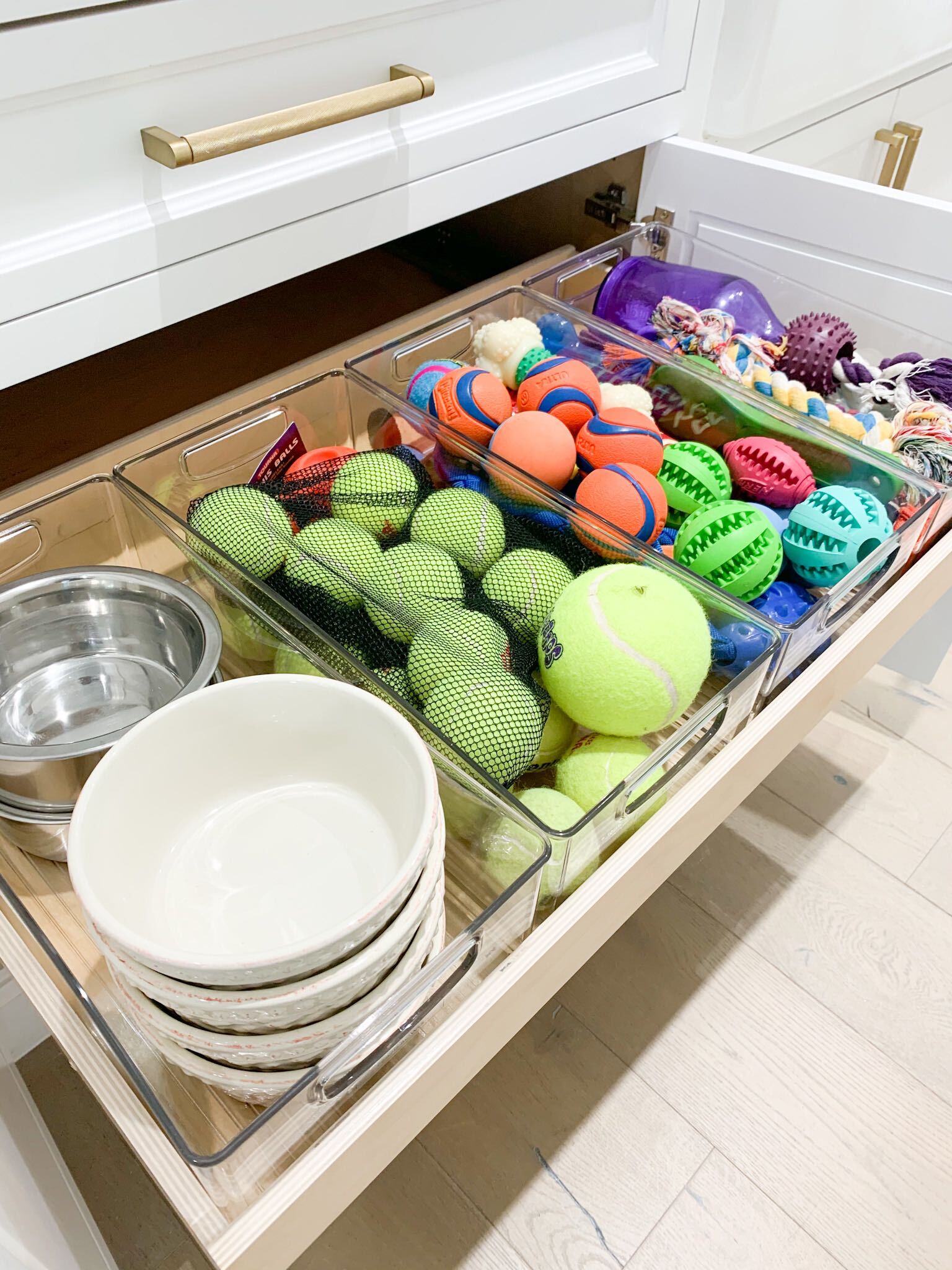
You might be tempted to go room-by-room or start in a specific location with the most considerable mess, but Kondo recommends gathering your pet’s supplies and sorting them by category or type.
Categories can include food, toys, and accessories.
Sorting by type—not location—helps you grasp what you have, how much of it you have, and whether you have multiples in various spots of the home. When you see everything laid out in front of you, it helps you make informed decisions about keeping or letting go of items.
Gathering all your pet’s stuff in one place can also help you see the bigger picture of what you buy—and how often you buy them. So, now is also an excellent time to create a list of the essentials or recurring purchases, says Jen Robin, founder, and CEO of Life in Jeneral.
“Keep a running list of all of your pet's supplies and update it as needed,” says Robin. “This will help you keep track of what you have and what you need to restock.”
2Decide What to Keep, Toss or Donate (and Invite Your Pet Into the Process!)
Now that you’ve separated everything into categories, it’s time to decide what to keep, toss, and donate. But don’t leave your fur baby out of this step!
“I encourage owners to lay all of their pet’s items out and consider what items are truly sparking joy for your pet,” Kondo says.
With everything on the floor, have your pet interact with the items:
- “If a toy or item excites them, hold onto it,” says Kondo. Place the item in your “keep” pile.
- “If it is something they often avoid using, it's most likely time to thoughtfully let go or donate to a local shelter or pet donation center,” says Kondo. Place the item in either your “donate” or “toss” piles.
Still trying to figure out what to do with something? As a rule of thumb, “it’s a good idea to say goodbye to accessories that haven’t been worn or used in the past year,” says Ashley Murphy, co-founder of NEAT Method. You can place these items in your “donate” pile if they're in good condition. Anything broken, worn-out, or expired belongs in the “toss” pile.
3Store Items Where They’ll Be Used—Or In One Centralized Place
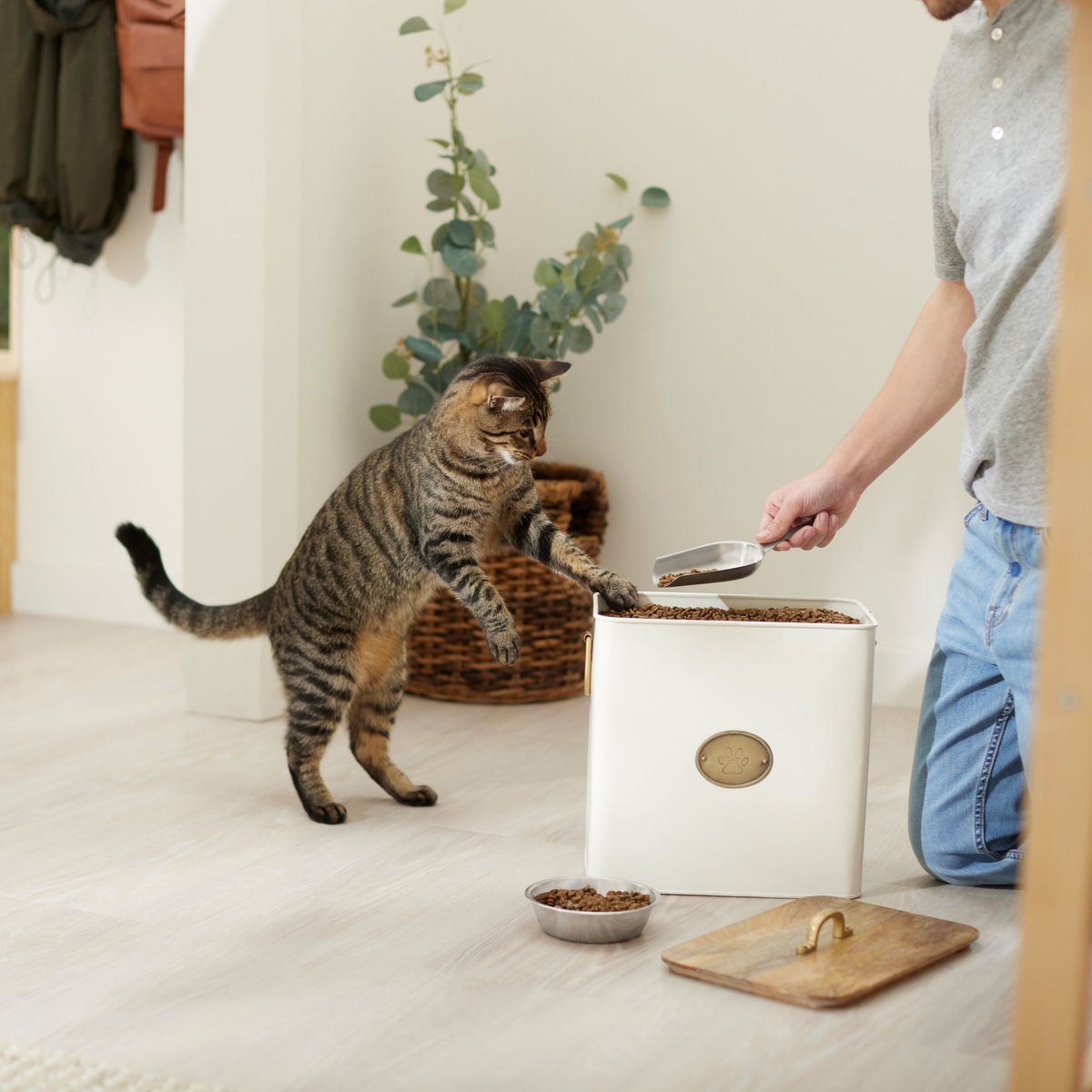
Now that you have all your “keeps,” it’s time to find proper homes for everything. You can go one of two ways with this:
1Store items where they're typically used or needed.
“The most important thing when organizing your pet’s belongings is to be thoughtful about where each category is located,” says Murphy. “A leash makes more sense hanging in the mudroom, while food should be placed near their bowls.”
2Carve out space for a one-stop shop.
For example, Robin designates the laundry room for all her dogs’ things. (She has a Maltese-Yorkie mix and a yellow Labrador, both adorably named Charlie.) “We keep a drawer for all their toys, under the sink cabinet for their food and treats, and one shelf for all their grooming essentials,” she says. “I can grab their leash, food, and brush all at the same time.”
No matter the size of your space, designating one area–or several specific storage areas–for your pet's supplies is, as Robin puts it, "amazing for keeping everything efficient and accessible."
4Use Dog Toy Boxes and Other Storage Bins to Contain the Clutter
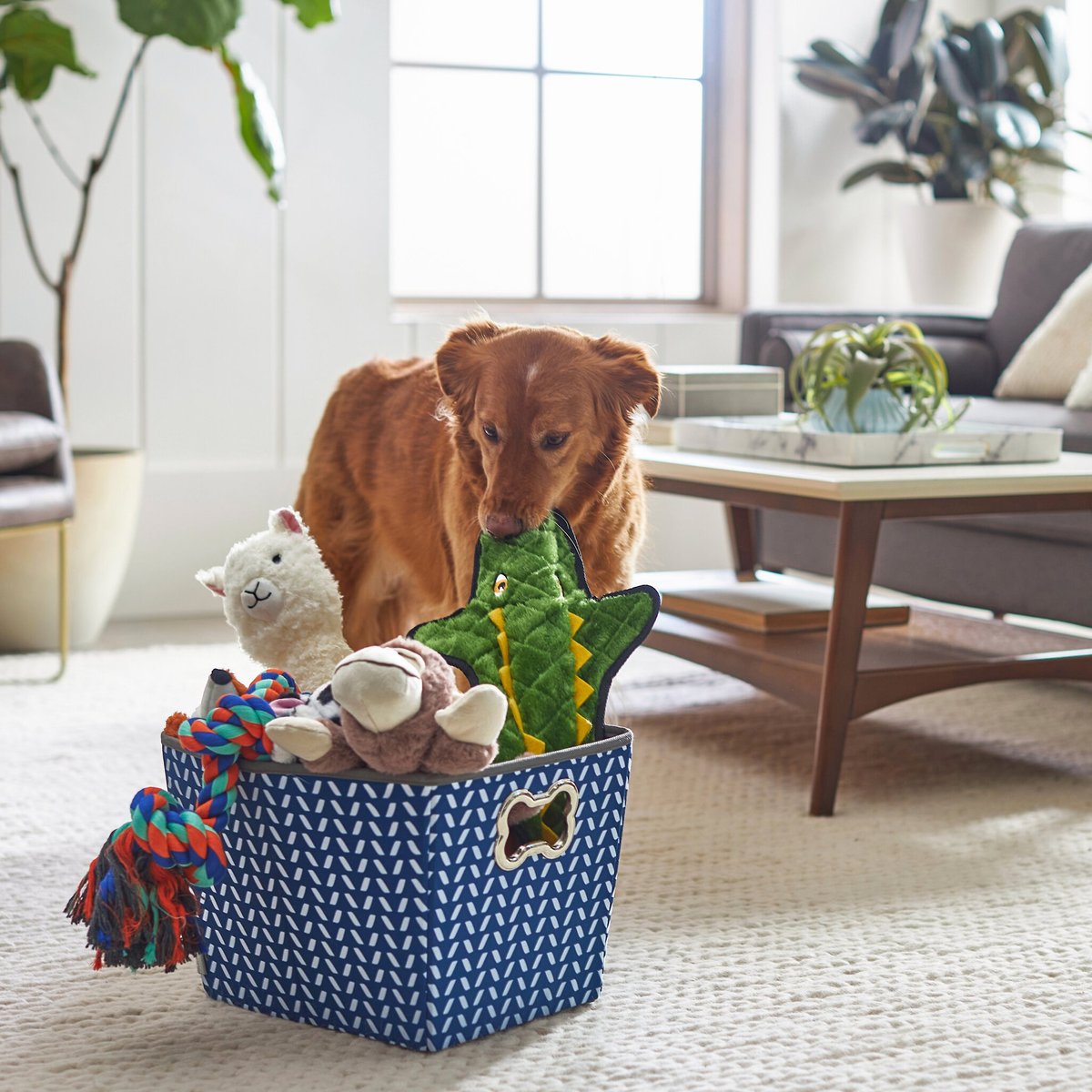
It’s not a secret that corralling all your pet’s things will help you keep things organized, but the kind of container matters, too.
Baskets
Baskets and bins are great for storing your pet’s toys, as they allow for easy access and independent playtime.
"Having a low, soft bin located within their space works well—whether in the living room or kitchen—so your pets can easily access their toys themselves," Kondo says.
One of our favorite dog toy baskets is Frisco's collapsible basket weave dog toy bin.
Plastic or Metal Bins
Choosing bins that can be easily wiped clean are a great solution for messier items such as pet food or dog treats, Murphy says.
Stackable Bins
For tight spaces, “stackable bins can be a great way to save space and keep your pet's supplies organized,” adds Robin.
Storage Bags or Jars
Storage bags or jars are a great way to store treats, kibble or medicine. Reusable, washable storage bags, like Kondo’s Stasher Bags, are fantastic for on-the-go pet organization.
Drawer Organizers
Drawer organizers are a smart way to keep small items, like grooming tools and treats, organized and easy to find.
Small Space Organizing Hacks
- Use over-the-door organizers: Save floor space and keep things off the ground.
- Utilize wall space: Install shelves or hanging baskets to store your pet’s supplies.
- Store under the bed: Corral everything from toys to clothing in a storage bin or basket under your bed.
5Label, Label and Label Again
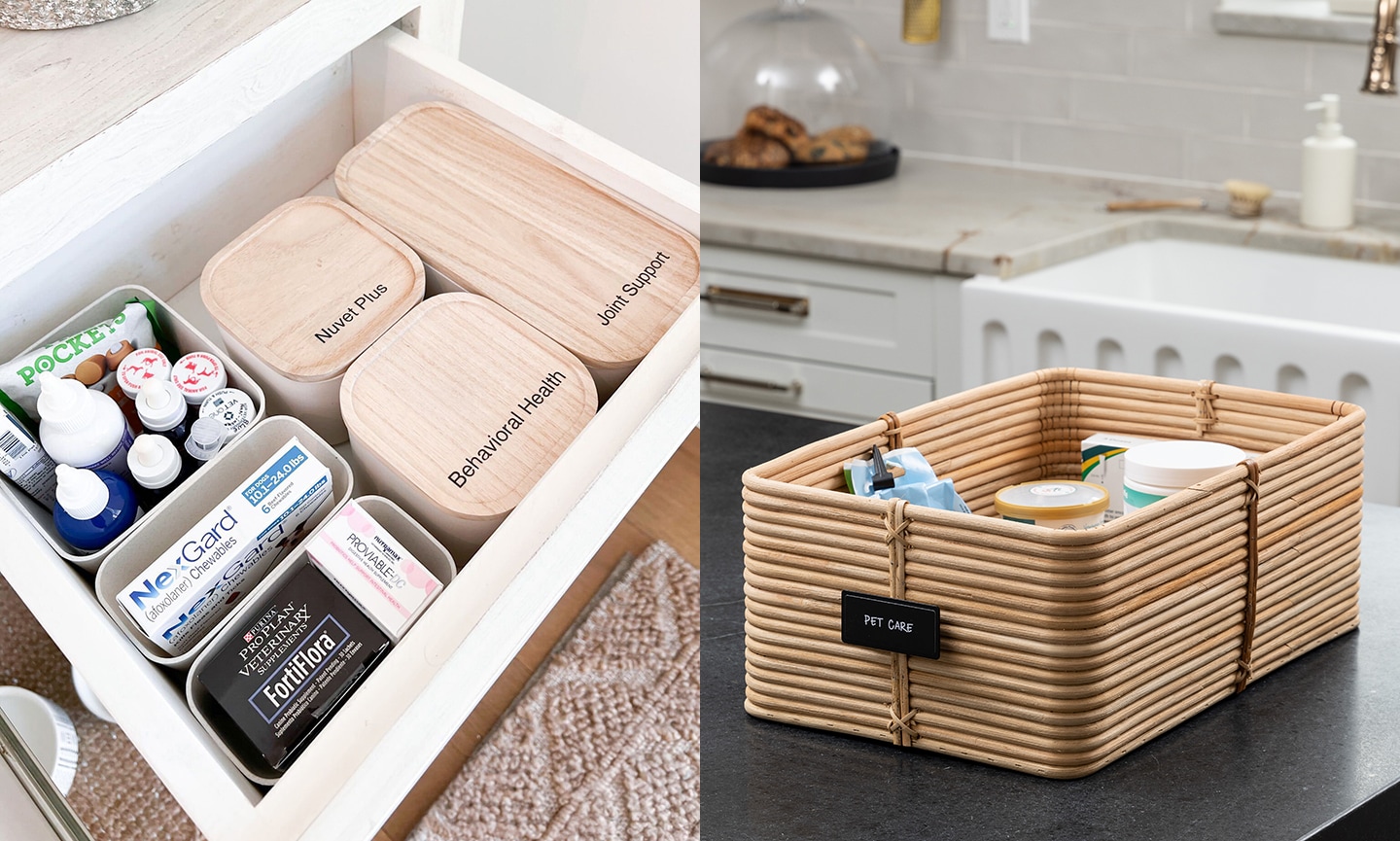
After you’ve found a home for your pet’s items, there’s one tip each tidying pro we spoke with agreed upon: labels!
“Label areas where your pet items live to help you keep track of what specifically lives where, such as inside drawers, bins or on shelves,” Kondo says.
While some vessels might seem obvious (a cat or dog toy bin probably doesn’t need a label if you can see the toys in there), if they are closed boxes, bins or storage containers, you may need a reminder of what exactly you put in there and why. It’s also helpful for pet sitters (or forgetful partners) who don’t know their way around your home.
"Having your bins visibly labeled creates a fool-proof system so anyone in your home can easily find and put items away," says Murphy.
But a word to the wise, she adds: "Don’t be too specific with your label terms. Broad category names such as ‘pet care’ and ‘pet walks’ will ensure your system lasts as your pet’s needs change."
Genius!
Meet the Experts

Marie Kondo
KonMari by Marie Kondo founder, author of "Kurashi at Home" and star of Netflix’s “Tidying Up with Marie Kondo”

Marissa Hagmeyer and Ashley Murphy
NEAT Method co-founders

Jen Robin
Life in Jeneral founder and CEO
More on organizing and cleaning:
Share:
